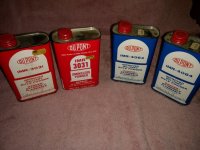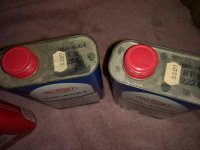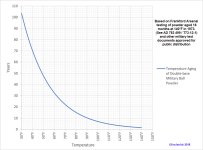Whistlebritches
New member
Was going through a couple boxes that had been stored way in the back for years.I found a few treasures but the 4 pounds of OR DuPont reloading powder was icing on the cake.......and yea check out thse prices.Pretty sure they were my Grandfathers......I just don't remember $3 powder.
I have a question or two.After pulling up current load info with Hogdgon IMR 4064 it dawned on me there could be a difference in the two.I pulled out my oldest reloading manuals,a Hornady third edition and a Nosler third edition,both late 80's I believe.The Hornady shows a max load of 4064 in 308 with a 165 grain bullet at 43.5 grains,the Nosler 44 grains.The current info on IMR 4064(Hogdgon made) is 46.3 grains.Is there that much difference or has something else changed?
I have a question or two.After pulling up current load info with Hogdgon IMR 4064 it dawned on me there could be a difference in the two.I pulled out my oldest reloading manuals,a Hornady third edition and a Nosler third edition,both late 80's I believe.The Hornady shows a max load of 4064 in 308 with a 165 grain bullet at 43.5 grains,the Nosler 44 grains.The current info on IMR 4064(Hogdgon made) is 46.3 grains.Is there that much difference or has something else changed?



